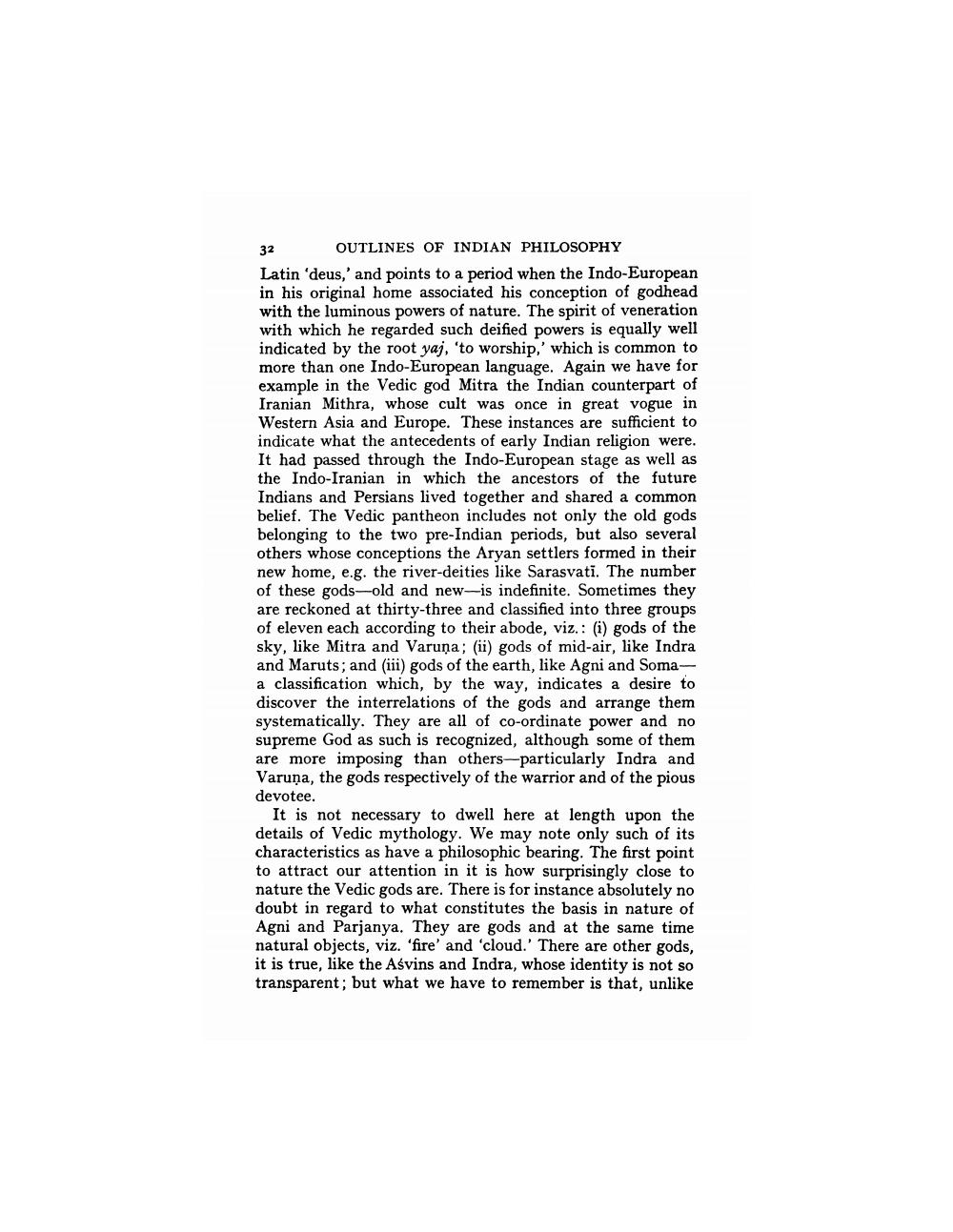________________
32 OUTLINES OF INDIAN PHILOSOPHY Latin 'deus,' and points to a period when the Indo-European in his original home associated his conception of godhead with the luminous powers of nature. The spirit of veneration with which he regarded such deified powers is equally well indicated by the root yaj, 'to worship,' which is common to more than one Indo-European language. Again we have for example in the Vedic god Mitra the Indian counterpart of Iranian Mithra, whose cult was once in great vogue in Western Asia and Europe. These instances are sufficient to indicate what the antecedents of early Indian religion were. It had passed through the Indo-European stage as well as the Indo-Iranian in which the ancestors of the future Indians and Persians lived together and shared a common belief. The Vedic pantheon includes not only the old gods belonging to the two pre-Indian periods, but also several others whose conceptions the Aryan settlers formed in their new home, e.g. the river-deities like Sarasvati. The number of these gods-old and new-is indefinite. Sometimes they are reckoned at thirty-three and classified into three groups of eleven each according to their abode, viz.: (i) gods of the sky, like Mitra and Varuņa; (ii) gods of mid-air, like Indra and Maruts; and (iii) gods of the earth, like Agni and Somaa classification which, by the way, indicates a desire to discover the interrelations of the gods and arrange them systematically. They are all of co-ordinate power and no supreme God as such is recognized, although some of them are more imposing than others-particularly Indra and Varuņa, the gods respectively of the warrior and of the pious devotee.
It is not necessary to dwell here at length upon the details of Vedic mythology. We may note only such of its characteristics as have a philosophic bearing. The first point to attract our attention in it is how surprisingly close to nature the Vedic gods are. There is for instance absolutely no doubt in regard to what constitutes the basis in nature of Agni and Parjanya. They are gods and at the same time natural objects, viz. 'fire' and 'cloud.' There are other gods, it is true, like the Asvins and Indra, whose identity is not so transparent; but what we have to remember is that, unlike




